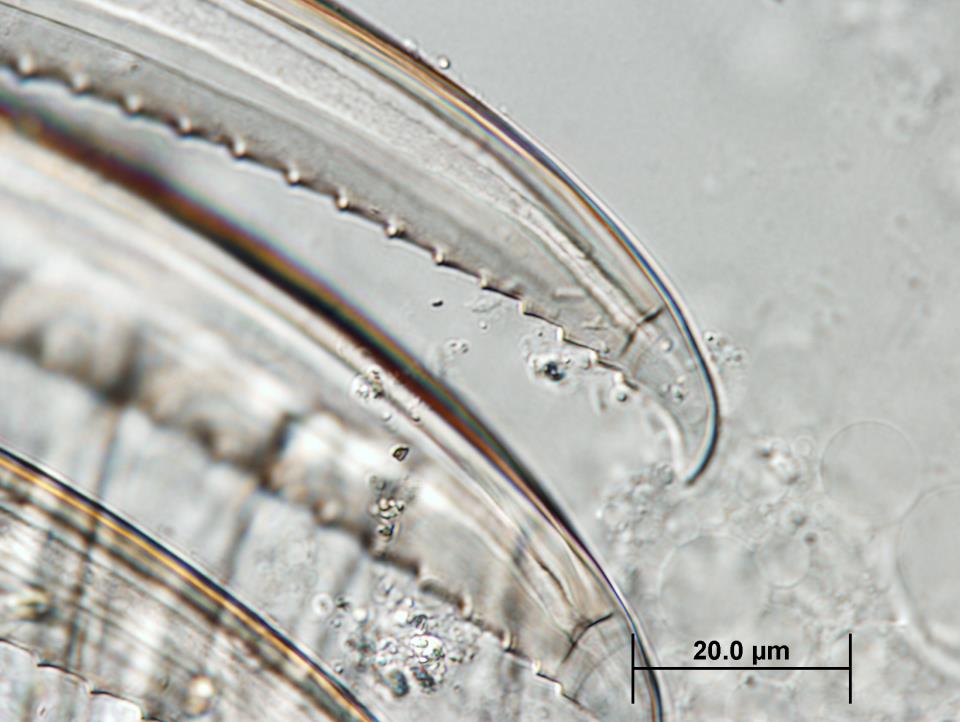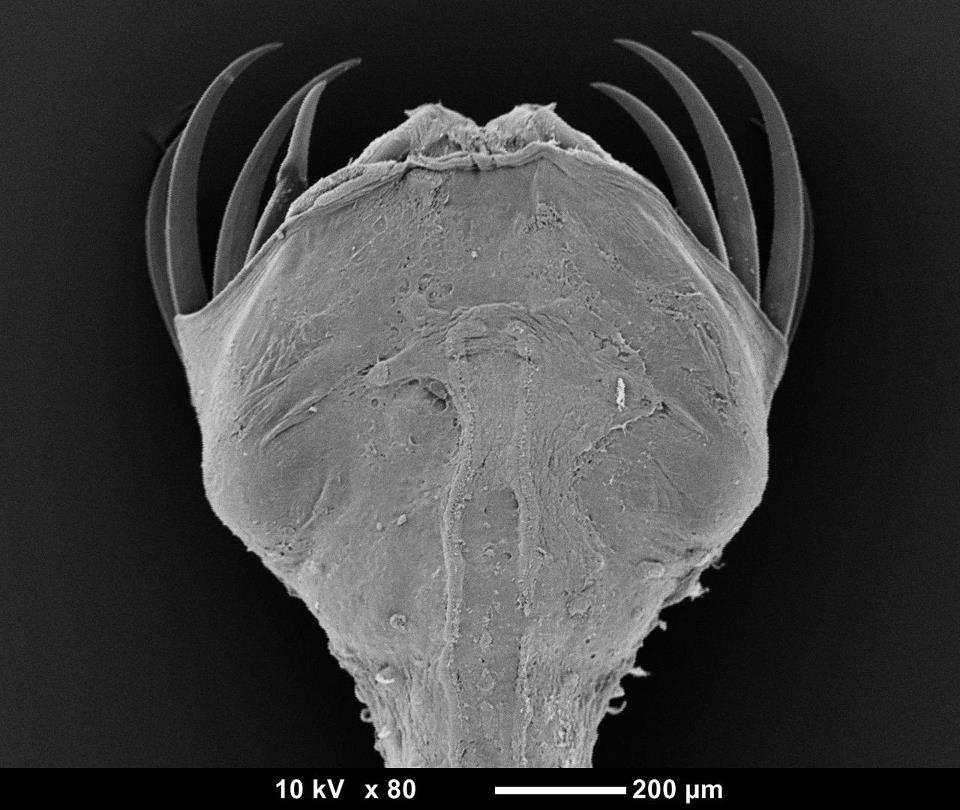Body
Chaetognaths
are bilaterally symmetrical organisms. Their body is divided into 3 segments:
head, trunk, and postanal tail, which are divided by septa. Chaetognaths have
an egg-shaped head and a mouth on their ventral side, and also possess grasping
spines (4-14 per side, which may be serrated, Fig 1), which are located on the side of
their head. These grasping spines, as well as their teeth (species either have one
or two rows), are used to capture prey. When swimming, chaetognaths cover their
head and grasping spines with a hood (Fig 2), as it is proposed that this gives them a
more streamlined body shape, however this hood can be rapidly retracted prior
to feeding (Ruppert et al. 2004).
Chaetognaths came in variety of sizes, for example:
Spadella
boucheri is the smallest chaetognath. It has a maximum length of 1.3 mm.
Whilst one of the largest is Pseudosagitta
gazellae. It has a maximum length of 105 mm.
(Thuesen 2009).

Figure 1: 100x zoom of serrated grasping spines of a chaetognath

Figure 2: SEM of hood covering a chaetognaths head. |